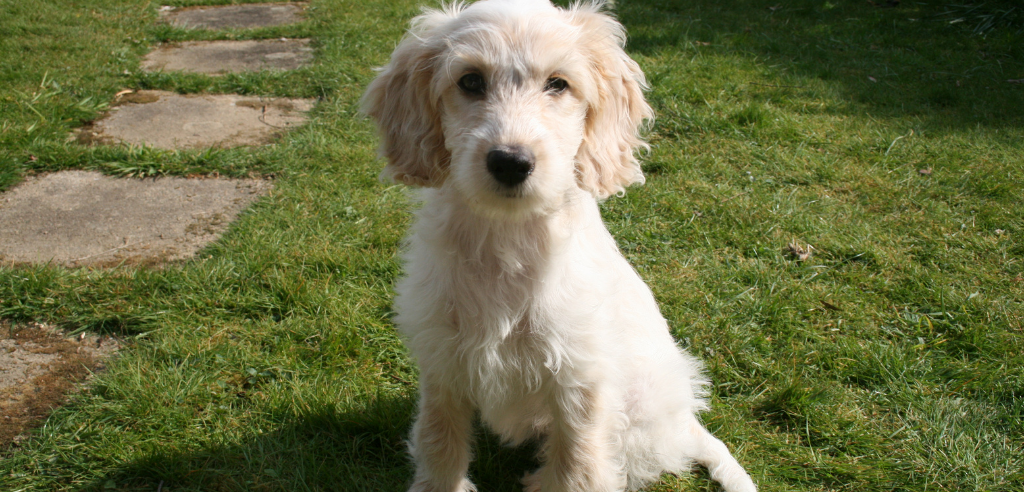Puppies are little bundles of energy and you might think that they need plenty of exercise to burn that energy off so they’ll settle down for a nap but that’s not actually the case.
In fact, puppies need a lot less exercise than adult dogs and too much exercise can be bad for their growing bones and joints and might lead to bigger issues later on in their lives.

But how much exercise do puppies need and what kind of exercise is best?
Generally speaking, it’ll depend on your puppy’s breed, age and weight.
As a general rule, aim for exercising your puppy for five minutes per month of age, twice a day (e.g. three months = 15 minutes twice a day, four months = 20 minutes twice a day etc.).
Using an activity tracker like the Pawfit 2 can help you easily keep track of how much exercise your puppy is getting each day and make sure they’re not over doing it.
Remember though that every dog is different, and that some might not be able to manage the recommended daily amount of exercise, and some might even need a little bit more. Keep an eye on your puppy when they are exercising for any signs they’re getting tired and after any exercise session, make sure they have plenty of rest.
What counts as exercise?
Once your puppy is fully vaccinated, usually after 13 weeks, walks should be a part of their daily routine.
Walks are really important for both a dog’s physical and mental wellbeing. No matter how big your garden is, it’s no substitute for exploring the big wide world and socialising with other dogs and humans.
Walking on hard surfaces like pavements and roads can be sore on a puppy’s soft paw pads so where possible, have your puppy walk on soft surfaces as well like grass and cool sand.
When out on a walk, go at your puppy’s pace and if they stop and lay down, give them time to rest before starting your walk again and perhaps take this as an indication that they’ve had enough exercise for now. Keep walking routes short and gradually increase the distance as your puppy gets stronger.

As well as walks, the following exercises are great for growing puppies:
Playing (with humans or other dogs)
Whether it’s a game of fetch or tug-of-war, play is great exercise for your puppy and an excellent way for you and your puppy to strengthen your bond.
Remember to keep the play sessions short and if your puppy wanders off during play or becomes uninterested, it probably means they need a break and a rest.
Training sessions
Training is very mentally exhausting and is a great way to tire out a pup that’s already had their daily exercise but still have some energy to burn. When your puppy is very young, keep sessions short to avoid frustration and boredom.
Sniffing things out like tasty treats
Toys like snuffle mats, where you hide treats so your puppy can sniff them out, are excellent mental stimulation that use up a lot of energy.
Swimming
Always make sure your puppy is supervised when they are swimming and make sure the water is clean and calm. Also remember that not all puppies are natural swimmers and may require a lot of assistance when they first try it out.

What about larger breeds?
Larger breeds like Great Danes will need more exercise than small breeds. However, it takes longer for their bones and joints to fully grow, usually up to 18 months so you will still need to keep an eye on how much exercise they’re doing for a bit longer. Break up exercises time into multiples sessions spread throughout the day to allow for plenty of rest and if your puppy is still a bundle of energy, try mental activities like training to tire them out.
If you’re unsure about how much exercise your puppy needs or have any further questions, speak to your vet who will be able to provide plenty of guidance.



